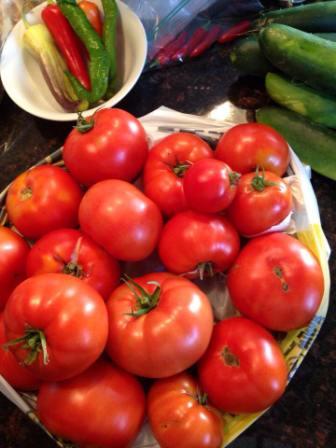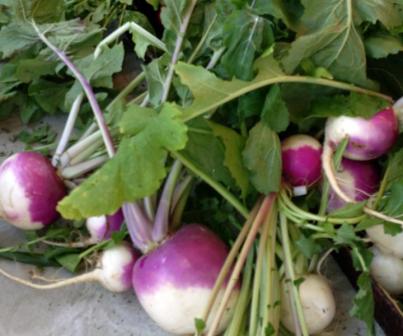Winter blues getting you down? Don’t just dream about garden planning for NJ’s spring planting season… do it! Even a first-time gardener can successfully grow healthy and delicious vegetables if they learn the basics of gardening and plan their plot in advance. Below, a list of things to consider before you lay the groundwork for your NJ backyard garden.
Of course – you don’t HAVE to do any of this stuff – you can just put in a few garden beds, plant some seeds, and hope for the best! This is what we love about gardening – it’s YOUR land, so pick and choose what works for you!
Soil testing.
Even if you HAVE planted and consumed vegetables from your own backyard in past years, it’s still a good idea to do a precautionary soil test to rule out lead, arsenic and other possible contaminants.
According to this article from the Rutgers School of Environmental and Biological Sciences, you can purchase a Soil Testing Kit from their website, and then mail your soil sample to your county’s cooperative extension (since on this website we are generally referring to Hunterdon county, you can find their cooperative extension information right here).
Location.
Once you determine that your soil is fit for planting vegetables, select a location for your garden bed or beds. This should be a spot on your property that will get at least 6 hours of sunlight per day, that is also within easy access of a water source such as a hose. (It is also possible to lug watering cans to and from your garden each day, but this is a rather arduous task, and you will likely quit watering your garden before you even start).
Many gardening experts suggest positioning your garden plot in the most southerly location of your yard, as this will yield the most sun. What they mean is, choose a spot on the south side of your house (if you can – our front door looks south, so we can’t very well plant our garden in the front yard). Also take care not to plant your garden near any large trees or structures which will shade it when the sun is lower in the sky.
To help you understand where to plant your garden for the most sun – find out where North, South, East and West are in relation to your yard. Then, assuming you have a big enough backyard for this to make a difference – plant the garden beds so that the TALLEST plants will face the north.
To do this, envision a row of corn (hypothetically) which will be the tallest plants and therefore this row will go behind everything else). Where in that row will your garden have to be positioned so that the back row (of hypothetical corn or other tall crop) will face north? It may be on the right or left side of your yard, or it may be at the back of the yard… or perhaps smack in the middle if that works with your backyard’s current landscape layout.
Garden bed design and installation.
Once you have a location in mind, plan out where you’ll put in garden beds, as well as how many garden beds you’ll be planting. Some people designate a single crop (or maybe one, two or three companion crops) per garden bed box.
So for example, you might have 2 garden beds of tomatoes and basil in each; 2 garden beds of corn, beans, squash and nasturtium; 1 bed of cabbages and marigolds, 2 beds of lettuce, onions and parsley, and so forth.
Obviously, if you live on a small parcel of land then it will be harder to fit much more than 2 garden beds – but you can still make your smaller garden attractive and quite prolific if you follow the raised bed gardening method.
Prepping the soil.
Well in advance of planting time, get the soil ready for planting. If you’ve never gardened before, then you must figure out what type of soil you have and whether you need to augment it. The ideal garden soil is loamy, meaning not too sandy and not too clay-like. Figure out your soil type by grabbing a clump of it with your bare hand. The soil should be soft, and crumble through your fingers. Loamy soil turns over easily with a shovel, and makes for ideal growing conditions because the roots of plants can spread freely in it.
If your soil has too much clay or sand in it, then buy large quantities of garden soil from your local nursery. It comes pre-bagged, or you can bring it home loose, via your own dump truck or the nursery’s delivery service. We use organic soil from Cierich’s in Pohatcong – it is black, rich and wonderful, and we have had much success growing garden vegetables each year.
It’s also a really good idea to supplement your soil with composted leaves and other biodegradable waste matter. Compost adds nutrients to the soil, making for stronger, more vitamin-rich vegetables that are able to fight off disease and yield you bigger, better crops. And, well-composted garden beds hold more water and regulate the temperature better – keeping them cooler as the temps rise, and warmer in the cold season.
In addition to installing custom built garden bed frames, we also sell compost tumblers that you can use to make your own compost and fertilize your garden multiple times over the course of the year. Ask us about a compost tumbler for your yard today!
Add fencing and paths.
Hunterdon County is overrun with deer, so we recommend wire fencing that is high enough to keep them, and other critters, from making your garden their nightly dining hall. We can install this fencing for you, if needed, as well as create gravel pathways between your garden beds to prevent you from walking on top of the beds and compacting the soil. As mentioned, garden soil should be loose so that plants can root themselves easily.
After you have all the essentials in place comes the fun part – going through your collection of garden seeds, and heading out to Home Depot for some exciting new varieties of veggies for this year’s garden harvest! Before you know it, St. Patrick’s Day will be here, and it will be time to plant peas and radishes… so be sure to get everything planned and ready for Gardening Season.




